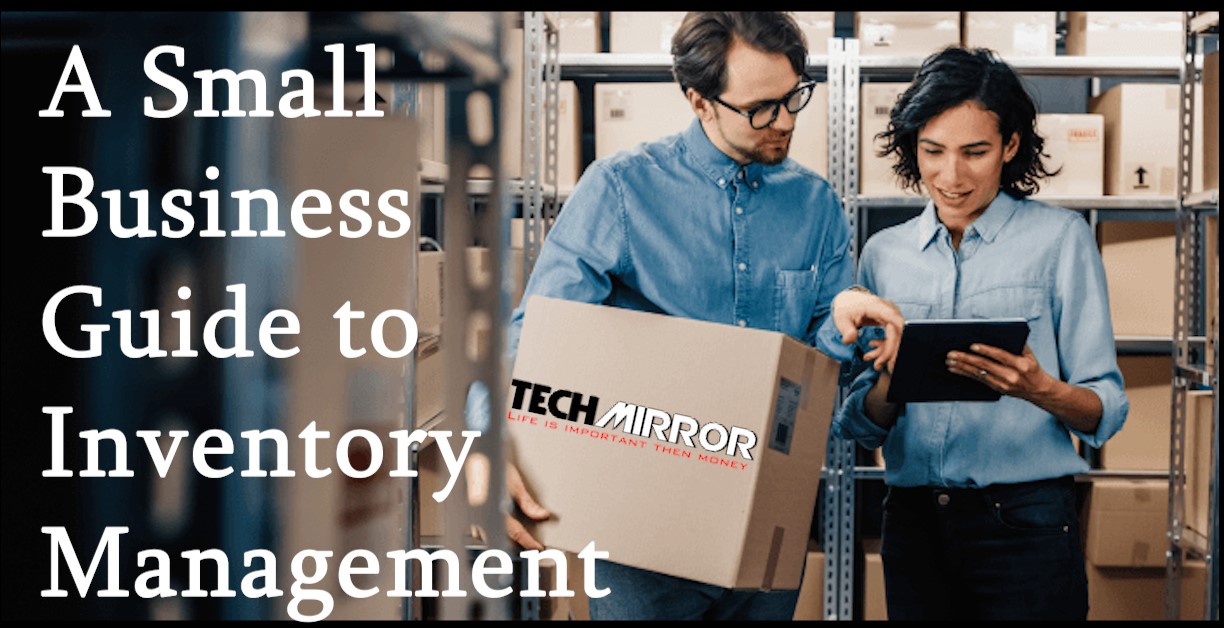It’s important to evaluate your business on a regular basis to ensure that you’re on track to succeed. One of the most integral parts of your business is inventory management.
How has your small business’s inventory management panned out? Have you had the right products available when you needed them? Did you lose out on business when items were out of stock? Or did you lose money due to excess stock?
In this article we discuss basic inventory management techniques, explain what to look for in good inventory management software, and go over some best practices for managing inventory.
What is inventory management?
Inventory management is the system you build to organize inventory through the supply chain. It covers all steps, from raw goods to finished goods, storing, and selling. It also tracks your company’s stocked goods and monitors their weight, dimensions, amounts, and location.
The goal of inventory management is to minimize the cost of holding inventory by helping you know when it’s time to replenish products or buy more materials to manufacture them. This helps you maintain optimal inventory levels and minimize costs.
Inventory control can be used interchangeably with inventory management. Essentially, it refers to when you have control over your stock, typically due to effective inventory management processes. It’s much easier to maintain control of your inventory with centralized inventory management.
Why Is Inventory Management for Small Businesses So Important?
Businesses of all sizes need to track inventory to help them manage costs and ensure they have an ample supply of products to meet customer demand. Effective inventory management allows businesses to save money and improve cash flow.
For example, purchasing products or raw materials that sit on shelves means that the benefit or value of the dollars invested in those materials is not being realized. On the other hand, not having enough inventory to meet customer demand can result in lost sales.
It’s critical for small businesses to reliably and cost-effectively manage their inventory.
Why Is Inventory Management A Challenge For Small Businesses
Simply put, inventory management refers to controlling the storage and usage of all items finished and unfinished. This is supported by cyber-physical systems, and it plays a pivotal role in an organization’s success. For SMBs, when they are done with the bottlenecks in production and have promising sales figures, managing inventory becomes a big challenge.
Small businesses approach it with the archaic paper-pen-calculator method or with the help of spreadsheets. These are temporary solutions as they allow one to manually record the incoming and outgoing stock along with minimal data regarding the items.
Some of the common indicators of needing a proper approach to inventory management are:
- You are constantly running out of stock
- You are not sure about the current stock levels
- There is hardly any credible data available with regard to how long an item has been stored or their current location in your warehouse
- How frequently you are able to replace your entire inventory
- You are facing situations where stored goods aren’t fit for consumption in production
- You are finding it difficult to store products and retrieve them on time
- Packing and shipping is one of the major supply chain bottlenecks
If any of these problems sound similar to you, it’s time you upgrade to a proper inventory management solution for your small business.
Small business inventory management is quite simple as you only need to track various pieces of information regarding the items stored. This includes the QA checks when receiving them, the vendor, batch number, quantity, current location in your warehouse, storage directions, and how long they stay there before getting replaced. You will need proper inventory management software combined with equipment like barcode scanners-printers.
Small Business Inventory Management Basics
Regardless of which inventory management tools you use, here are some basic tips to help you get started.
1. Use the first in, first out (FIFO) system.
Sell product in the same order they were made or purchased. That means older products are used or sold first, whether in a store or warehouse. It’s especially crucial for perishable items of course. Packaged products that linger on the shelves are more likely to be damaged.
2. Identify slow-selling stock.
Look for stock that hasn’t sold in the last six to 12 months. Consider using promotions to move it to free up space for better-selling items.
3. Take physical inventory.
Take physical inventory regularly, whether you do it all at once or use a cycle-count strategy to focus on different segments at different times. This step is one where the right tools can make a big difference.
4. Prioritize inventory with ABCs.
Group your inventory by A-B-C categories based on pricing level and annual value. Items in the A category are typically higher cost and have lower sales volume but higher value than B items and C items.
5. Select tools.
Leave paper and spreadsheets behind and select an inventory management tool that fits your business processes. There are free and low-cost cloud-based options that small businesses can connect with their point of sale and accounting systems. There may be a learning curve, but the time invested will pay off.
6. Work with a small business inventory solutions provider.
If your business is growing, it may be time to act like one of the big guys. Outsource some or all of your inventory and logistics management with a provider that understands small business. With the right partner, your inventory management can transform from a cost center into a competitive advantage.
Inventory management techniques and best practices for small business
Here are some of the techniques that many small businesses use to manage inventory:
- Fine-tune your forecasting. Accurate forecasting is vital. Your projected sales calculations should be based on factors such as historical sales figures (if you sell with Square, look to your online Dashboard for this info), market trends, predicted growth and the economy, promotions, marketing efforts, etc.
- Use the FIFO approach (first in, first out). Goods should be sold in the same chronological order as they were purchased or created. This is especially important for perishable products like food, flowers, and makeup. A bar owner, for example, has to be cognizant of the materials behind the bar and apply FIFO methods to improve bar inventory. It’s also a good idea for nonperishable goods since items sitting around for too long might become damaged, or otherwise out of date and unsellable. The best way to apply FIFO in a storeroom or warehouse is to add new items from the back so the older products are at the front.
- Identify low-turn stock. If you have stock that hasn’t sold at all in the last six to 12 months, it’s probably time to stop stocking that item. You might also consider different strategies for getting rid of that stock — like a special discount or promotion — since excess stock wastes both your space and capital.
- Audit your stock. Even with good inventory management software, periodically you still need to actually count your inventory to make sure what you have in stock matches what you think you have. Businesses use different techniques, including an annual, year-end physical inventory that counts every single item and ongoing spot-checking, which can be most useful for products that are moving fast or have stocking issues.
- Use cloud-based inventory management software. Look for software with real-time sales analytics. Square’s software connects directly to your point of sale, so your stock levels are automatically adjusted every time you make a sale. Receive daily stock alert emails so you always know which items are low or out of stock so you can order more in time.
- Track your stock levels at all times. Have a solid system in place for tracking your stock levels, prioritizing the most expensive products. Effective software saves you time and money by doing much of the heavy lifting for you.
- Reduce equipment repair times. Essential machinery isn’t always in working order, so it’s important to manage those assets. A broken piece of machinery can be costly. Monitoring your machinery and its parts is crucial to understanding its life cycle, so you can be prepared before issues arise.
- Don’t forget quality control. No matter your specialty, it’s important to ensure that all your products look great and are working well. It could be as simple as having employees do a quick examination during stock audits that includes a checklist for signs of damage and correct product labeling.
- Hire a stock controller. Stock control is used to show the amount of inventory you have at a given time and applies to all items from raw materials to finished goods. If you have a lot of inventory, you might need one person who is responsible for it. A stock controller processes all purchase orders, receives deliveries, and makes sure that everything coming in matches what was ordered.
- Remember your ABCs. Many businesses find it helpful to have tighter controls over higher-value items by grouping inventory items into A, B, and C categories.




